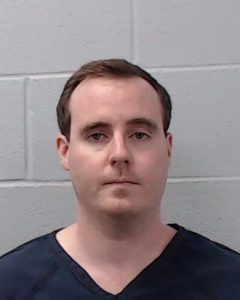
by Sahar Chmais
The number of students failing at least one course in Hays CISD and Dripping Springs ISD doubled between the fall 2019 semester and the fall 2020 semester – the biggest culprit has been COVID-19.
Comparing the Fall 2019 and 2020 semesters, HCISD went from an 11.3% failing rate to 23.4%, and DSISD went from 6.1% to 11.8% failing rate.
Educators believe that the spring semester is beginning to shape out better than the fall, but that does not mean students are out of the re...
by Sahar Chmais
The number of students failing at least one course in Hays CISD and Dripping Springs ISD doubled between the fall 2019 semester and the fall 2020 semester – the biggest culprit has been COVID-19.
Comparing the Fall 2019 and 2020 semesters, HCISD went from an 11.3% failing rate to 23.4%, and DSISD went from 6.1% to 11.8% failing rate.
Educators believe that the spring semester is beginning to shape out better than the fall, but that does not mean students are out of the red. Students, educators and parents will have to work hand-in-hand over the remaining school year, summer school and even into next year to boost kids who are failing.
“The light at the end of the tunnel is there for the crisis point of the pandemic,” said HCISD Chief Communications Officer Tim Savoy, “but effects of the pandemic will linger in academic loss this year. Teachers will be working to fix it for at least the next school year, if not longer.”
Overall, schools are heading in the proper direction because more parents are getting vaccinated and the vaccine trials for children are moving along. These conditions will help create a more normal upcoming school year, Savoy said.
But much of the struggle that caused higher failing rates comes from students doing online courses. Kids are being asked to follow a college-level schedule that requires independence, self and time management, all in a new learning environment, said Derek McDaniel, HCISD director of curriculum and instruction. Another factor affecting grades is difficulty in communication between students, their peers and teachers, he added.
One fourth grade teacher at Tom Green Elementary school, Rosa Aponte, has gotten creative in overcoming the communication challenge. Aponte has set up two cameras in the classroom so the online students get to see their teacher and their classmates, making them feel part of the group. She has also set up a way for all kids, in-person and online, to communicate through Zoom.
“The kids feel comfortable and not isolated working from home,” Aponte said. “They feel like part of the classroom. They help each other. When we go into groups, the ones that finish first go to help those who didn’t finish. They started doing it on their own asking ‘who needs help?’ That collaboration is amazing.”
Aponte has also set up a new timeline for students to turn in their assignments so they do not fall behind. All students have to finish their assignments by Thursday. Those who did not submit their work by Thursday will receive help from their classmates so everything is finished by Friday.
Even though teachers are finding ways to navigate the system, other factors still exist that are causing a higher failure rate.
A child’s home environment can have a tremendous effect on how they do in school, said first grade teacher at Uhland Elementary school, Angela Pena.
Some older children are at home, taking care of other siblings. In some other cases, parents are not respecting the school hours. Pena said that she has seen children do their online class while at the park or at a doctor’s office.
Online schooling has posed many challenges teachers and their districts are trying to overcome, and help is on the way. Districts are already seeing some improvement in student grades because more have gone back to in-person classes. Schools are also looking for ways to help students catch up on unlearned lessons.
HCISD does not want to wait for summer school to improve their students’ grades. The district is creating additional tutoring options for students who need it and increasing office hours for virtual students, McDaniel said. Schools also started their credit recovery process earlier than normal; they moved first semester credit make up to the beginning of the second semester.
Additionally, HCISD is encouraging students who need summer school to attend in-person if at all possible.
“We can better meet the needs of students when we can work face-to-face with them,” McDaniel said. “Some things just don’t translate through a computer, like the look of confusion on a student’s face; that can’t always be seen virtually.”
A lot of students also find it easier not to engage and ask questions when it is through a screen, he added.
DSISD is using an Effective Collaborative Teams (ECT) process to review data on multiple measures to determine support needed, said assistant superintendent of learning and innovation, Karen Kidd.
“Teams intentionally plan for instruction using a variety of strategies and settings to support learning,” Kidd said. “Educators use multiple resources based on the unique needs of students. We have a Multi-Tiered Support System to address student learning needs in specific areas.”
Kidd added that the district is reviewing various summer programs as a supplemental tool to support teachers.
Parents can also play a part in supporting their struggling children.
One way is to keep children connected to their peers as much as possible to foster social-emotional connections, said Sycamore Springs Elementary Principal Kristen Ray.
She also suggested that parents partner with their children’s teacher to seek out advice on resources for the summer.
Further, parents can help their kids learn advocacy skills so they too, know they can seek help from counselors, teachers and administrators, said Dripping Springs High School Principal Angela Gamez.
“Providing structure is also helpful: setting up a calendar, a work space at home, scheduling their time throughout the day to allow for both academics and extracurriculars, but also down time/family time and plenty of time to sleep,” Gamez added.
Through this difficult period, Savoy said teachers have greatly appreciated parental support. Respectively, he added that teachers should not be forgotten in the upcoming school years because of the added challenges to come.
“I know they’re up to the challenge because they do what they do because they love it and because of their love for students,” Savoy said. “But don’t forget your teachers next year and the year after because there is a lot of work ahead of them.”















